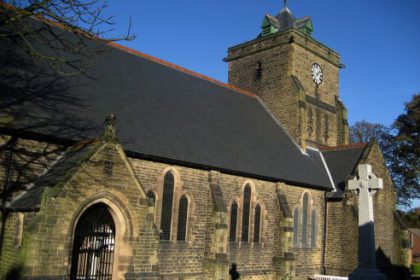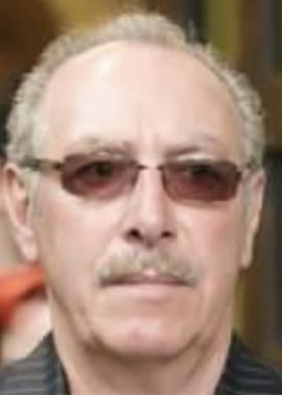Granted operating license by NCB in 1947 and had three directors, Colin and Albert Pemberton and Brian Hutchinson.
Please note the additional information below was supplied by Mr Lindsay Pemberton (DoB 5th June 1949) youngest child of Albert Pemberton and Margret Pemberton (nee Robinson).
According to published records Albert Pemberton was the eldest of four children Herbert, Nellie and Colin. Their parents William John Pemberton and Mary Hannah Pemberton (nee Clegg) married on the 17th August 1891 and was fully employed as a banksman.
My Father married his first wife Jenny Rolfe on the 3rd April 1925 and they had two children David Ormond Pemberton and Mary Constance Pemberton 27thMay 1927 and 14th July 1929 respectively. Jenny sadly died on the 3rd January 1940 following a long illness.
A marriage between Albert Pemberton and Margret Robinson was recorded in May 1948 and they were blessed with two children Sheila and Lindsay Pemberton.
Albert Pemberton died 13th April 1966
David Ormond Pemberton died 10th January 1986
Margret Pemberton died 25th March 2006
Mary Constance Marsh (nee Pemberton) died 14th August 2011
Your article, quite correctly informed the reader that there were three registered co-directors – Colin Pemberton, Albert Pemberton (who survived Colin by some three years) and Brain Hutchinson (as a child I was encouraged to address him as Uncle Brian). As I remember it, my blood relative Colin Pemberton, whilst a registered co-director of the business, had little to do with the day to day management of the colliery.
My father, Albert Pemberton, was the Company Secretary and Finacial Director and was responsible for the company finances. Brian Hutchinson, as your article suggests, was the engineer and mining development co-director. He had practical knowledge and skills which were second to none – he could turn his hand to most things including explosives.
In 1951 my father purchased a farm which my brother David managed for many years, until our fathers death, at which time he joined the colliery business to support Brian Hutchinson. My memory tells me that a third party became involved around that time, I am unsure in what capacity, sadly the only name I can offer is Mr Fox who came from a farming background. Nevertheless, Dent Main continued mainly as a coal haulage and coal delivery business. There had been an attempt at establishing a second drift mine a little distance from Dent Main called Moorside Colliery. I was told that it never really developed its potential and was subsequently closed.
At this point, again from memory, there were a number of flat-back and tipper heavy vehicles which were at their disposal (please see the pictures provided).
These images were taken by me at the request of my father by way of recording the arrival of the new Comer Tipper Lorry.
My best guess at the date would be in the very early days of the 1960‘s, possibly 1961/62 (sorry I am unable to be more specific).
It is true to say that the latest addition carries the name of M Heath on the cab but again from memory I was always under the impression that Dent Main owned the vehicles and that there had been some agreement with the said M Heath on marketing.
Possibly the answer will be in the business archives at the time the Dent Main was folded and purchased by Mr Phil Roberts a mining engineer. My Brother David and Brian were indeed very involved at that time as David was to work for Mr Roberts up until his death in January 1986. Sadly I am unable to offer any further information as my own life took a very different personal and professional direction.
Lindsay Pemberton
8th December 2023
Dent Main Colliery was situated on Birley Moor Road, between Frecheville and Mosborough.
The site is now occupied by the Birley garden centre.
The adit (entrance to the drift was approximately 100 yards from the main road and the drift dipped to a gradient of 1 in 3.3 into the workings of the Parkgate coal seam.
The Coalmining History Resource Centre states that there were twenty seven men working underground and eleven on the surface in 1945; the manager at this time was J H Heslop.
The pit was gas-free so the colliers were allowed to use acetylene lamps as working lights.
There were no mechanical means of cutting the coal: holes were drilled into the coal face at intervals along its length, shots were fired which brough down the coal and it was then worked by pic and shovel and loaded into the tubs, which were of 10 cwt capacity.
Pit ponies were used in the roadways to transport materials to the workings from the pit bottom, the average height of the roadways being only 5 feet. The ponies were also used to haul the full coal tubs from the workings up to the bottom of the drift, where they were then attached to a haulage rope to be hauled up the drift with a petrol-engine winch.
On reaching the surface the tubs were detached from the haulage rope and derailed by one man using a long pole, tipping the coal onto the screening belt, where he then joined two other men in sorting the coal until the next tub reached the surface.
Dent Main was one of the last pits in Sheffield area to use pit ponies; they were well looked after and regularly taken to Hackenthorpe village to be re-shoed.
The pit was known locally as Diamond Row Pit due to a row of miners’ cottages that were built topside the colliery entrance and had diamond-design leaded windows.
The pit worked in wet conditions, and orange-coloured ‘ochre wate’ was continually pumped out due to iron deposits in the workings.
The colliery was successful and supplied its coal to the steelworks in Sheffield, the main hauliers being Robinsons of Sheffield.











